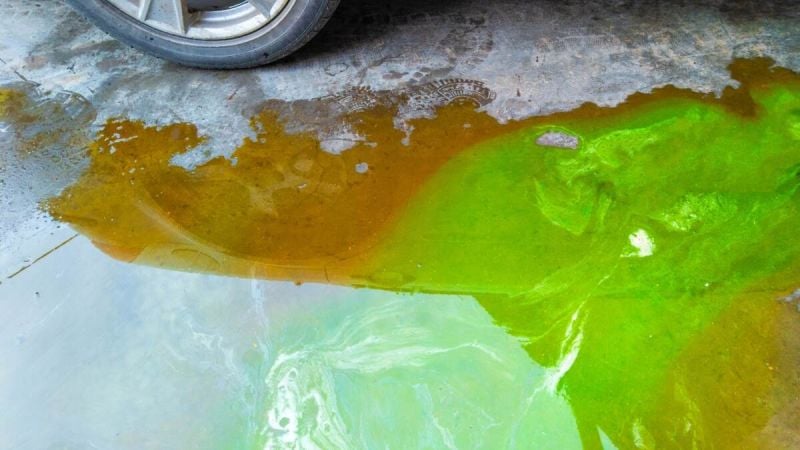Coolant Leak Problems
Coolant leaks can range from a mere annoyance to a big problem putting your engine at risk of serious damage. One of the problems of identifying the source of a coolant leak is that sometimes it is difficult to trace exactly where the leak is coming from due to the leak spreading itself everywhere and anywhere while driving.
However, when a coolant leak becomes a common problem within certain engine types, the source can be easier to trace with the help of a mechanic familiar with your engine type.
Help on Identifying Coyote Engine Coolant Leaks
Such was the case in a recent Ford Tech Makuloco YouTube channel episode where the host helps Ford owners navigate to the source of their coolant leak based on his experience with the Ford F-150 5.0L Coyote engine.
Ford Coyote Engine Family
The Ford F-150 5.0L Coyote engine refers to a specific engine variant used in certain models of the Ford F-150 pickup truck. The "5.0L" denotes the engine's displacement, which is 5.0 liters, and "Coyote" is the name given by Ford to this particular engine family.
The Coyote engine is a modern, high-performance, naturally aspirated V8 engine with advanced feature technologies such as:
- Dual Overhead Camshafts (DOHC)―a design where each cylinder head has two camshafts: one for intake valves and one for exhaust valves. This design allows for precise control over valve timing and improves engine efficiency and performance.
- Variable Valve Timing (VVT)―which allows for the adjustment of valve timing to optimize performance, fuel efficiency, and emissions under different driving conditions and high-pressure direct fuel injection.
- Direct Fuel Injection (DFI)―where fuel is injected directly into the combustion chamber, resulting in better fuel atomization, improved combustion, and increased efficiency.
- Aluminum Construction―Coyote engines typically feature aluminum engine blocks and cylinder heads, which help reduce weight and improve cooling, resulting in a marked improvement in overall efficiency.
As such, the 5.0L Coyote engine is known for its power, torque, and smooth operation, making it a popular choice for those seeking performance and capability in their trucks. It has been used in various Ford vehicles, including the F-150 pickup truck, Mustang GT, and other performance-oriented vehicles within the Ford line-up.
Sources of the Top 5 Most Common Leak Points:
Follow along with the host in the short video below to learn about the potential trouble spots of coolant leaks in this type of Ford engine and what you can do about it either as part of your preventive maintenance or repair.
Spoiler Alert: However, if you want to skip ahead to an abbreviated summary of the sources and parts needed for repair or preventive care, go to the spoiler alert immediately following the video.
2011+ Ford F-150 5.0L Coyote Engines: The Top 5 Most Common Coolant Leaks!
Spoiler Alert Summary
#1 Upper Radiator Hose O-Ring where the hose connects to a T-adaptor. Replacement O-ring fix: https://amzn.to/48ZYUvA
#2 "T" Connector housing failure. Replacement housing fix: https://amzn.to/3w9oL5u
#3 Coolant Bottle seam leak (2015+) and/or FL3Z8A080A Coolant Bottle Quick Connect Hose (2011-2014) leak. Replacement fix: https://amzn.to/3SJfYjv
#4 Water Pump leak. Replacement fix: https://amzn.to/49nEYST
#5 Heater Hose leaks.
However, other potential leak areas do occur but are not as common. For example: water thermostat housing, block heater, and radiator.
For additional useful Ford-related articles from this YouTube channel host, here are three for your consideration:
- Ford EcoBoost Engine Replacement Issue with These Model Years You Need to Know
- Ford Triton 3-Valve Engine Spark Plug Problem You Won’t Believe
- Ford EcoBoost Engine Oil Breakdown Problem
Timothy Boyer is an automotive reporter based in Cincinnati. Experienced with early car restorations, he regularly restores older vehicles with engine modifications for improved performance. Follow Tim on “Zen and the Art of DIY Car Repair” website, the Zen Mechanic blog and on Twitter at @TimBoyerWrites and Facebook for daily news and topics related to new and used cars and trucks.
COMING UP NEXT: Most Reliable 3-Year-Old Midsized SUVs from Toyota
Image source: Deposit Photos











